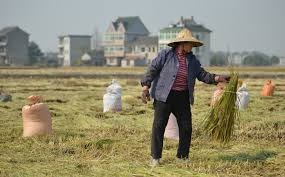Hazard Events Impacting Households over the Past Decade
An in-depth analysis was conducted on a variety of climate and socio-economic events that have significantly impacted farmers’ livelihoods over the past 10 years (2005–2015). These events, including family sickness, livestock diseases, droughts, crop diseases, and pests, have considerable influence on farmers’ lives. A comprehensive comparison table was compiled, depicting the number of households affected by these events.
Comparative Analysis of Hazard Events over Two Decades
The study involved surveying respondents about hazard events they endured in the past 10 years and if they occurred 10 years prior to that. Statistical results are provided in Table 2. Most respondents indicated that the events they suffered from in the last 10 years also occurred 10 years prior.
Frequency Shift of Hazard Events over the Past Decade
The study also analysed the change in frequency of hazard events over the past 10 years. The survey results are detailed in Table 3. Interestingly, the most common response for events like family sickness, livestock diseases, and crop diseases and pests was that the frequency remained unchanged in the past decade. However, for events like droughts, the majority believed that their frequency had increased.
Severity Shift of Hazard Events over the Past Decade
Comparative data on the severity of significant events over the past decade compared to the previous decade is provided in Table 4. Many respondents felt that events such as family sickness, livestock diseases, and crop diseases and pests had increased in severity over the past decade. This sentiment was particularly pronounced for droughts.
Factors Influencing Perceptions of Climatic Events
Several climate-related events, including droughts and erratic rainfall patterns, were chosen for analysis in Table 5. This table assesses the impact of socio-economic variables on local people’s perceptions of these events over time.
Factors Affecting Perceptions of Drought Severity and Frequency
Various factors influencing farmer perceptions of changes in drought frequency and severity are outlined in Table 6. The data suggests that factors such as distance from the county seat, the proportion of irrigable land, and the age and education level of the respondent play significant roles in their perceptions.
Factors Affecting Perceptions of Long-term Drought Severity and Frequency
Several factors influencing perceptions of long-term drought changes in frequency and severity are detailed in Table 7. The study found that factors such as the household’s distance from the county seat, the proportion of rain-fed land, and the proportion of income from business activities other than tourism services had a significant impact on perceptions.
Factors Affecting Perceptions of Erratic Rainfall Severity and Frequency
Several factors influencing perceptions of changes in erratic rainfall frequency and severity are detailed in Table 8. The study found that factors such as the proportion of cultivated farmland, distance from the county seat, and the respondent’s ethnic background played significant roles in their perceptions.
Original Story at www.nature.com
